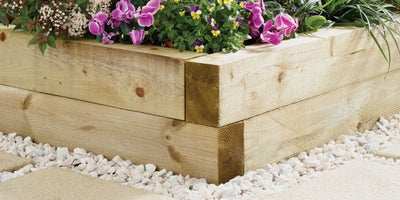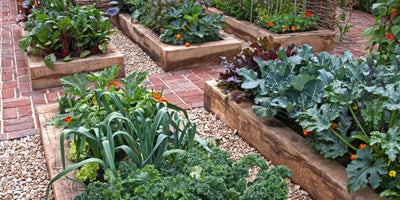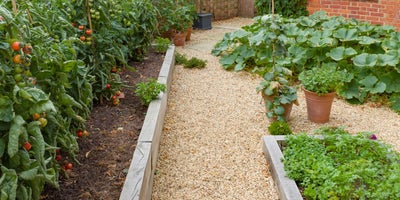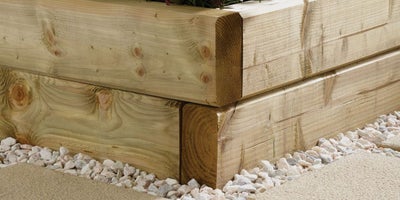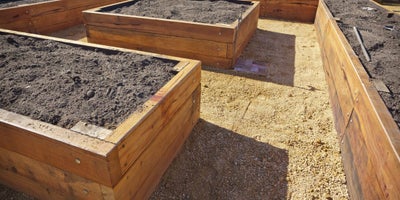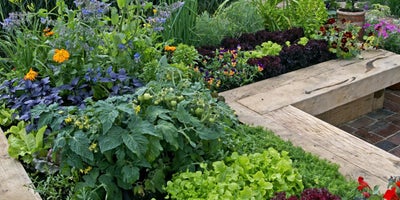When thinking about the design of your raised bed, begin by considering the size and shape of your garden and how the bed will fit into your garden landscaping. Do you want your raised bed to feature as a focal point of the space, streamline your current bedding for neater borders, or discretely tuck into a corner for contained growth?
Get creative to make the most of your outdoor space. Whether you opt for classic rectangles, a row of smaller square beds, or diagonal frames to suit a corner plot, raised planters offer great flexibility for any area of the garden.
When deciding on the height, think about whether you prefer to sit, stand or kneel when gardening. It’s important to work out the most comfortable and practical dimensions for yourself.
Consider the access. If you build a long run of raised beds, you may be tempted to step over the soil rather than use a path or walkway to get around your garden. You should also consider the surrounding areas to ensure you have enough space to manoeuvre a wheelbarrow or lawn mower.
Raised beds are traditionally constructed from sleepers that are fixed at right angles to form a frame. There are many ways to construct sleeper beds but we recommend laying your sleepers in frames, so the corner butt joints are overlapped and secured with heavy-duty exterior timber screws. Sleepers are heavy by nature, so if you are only building a frame with one level, you may choose to position the sleepers without fixing.
Sleepers can be laid on their widest side or edge for additional height, so consider how you will use the material when you’re planning the design to ensure you have enough timber to hand.
